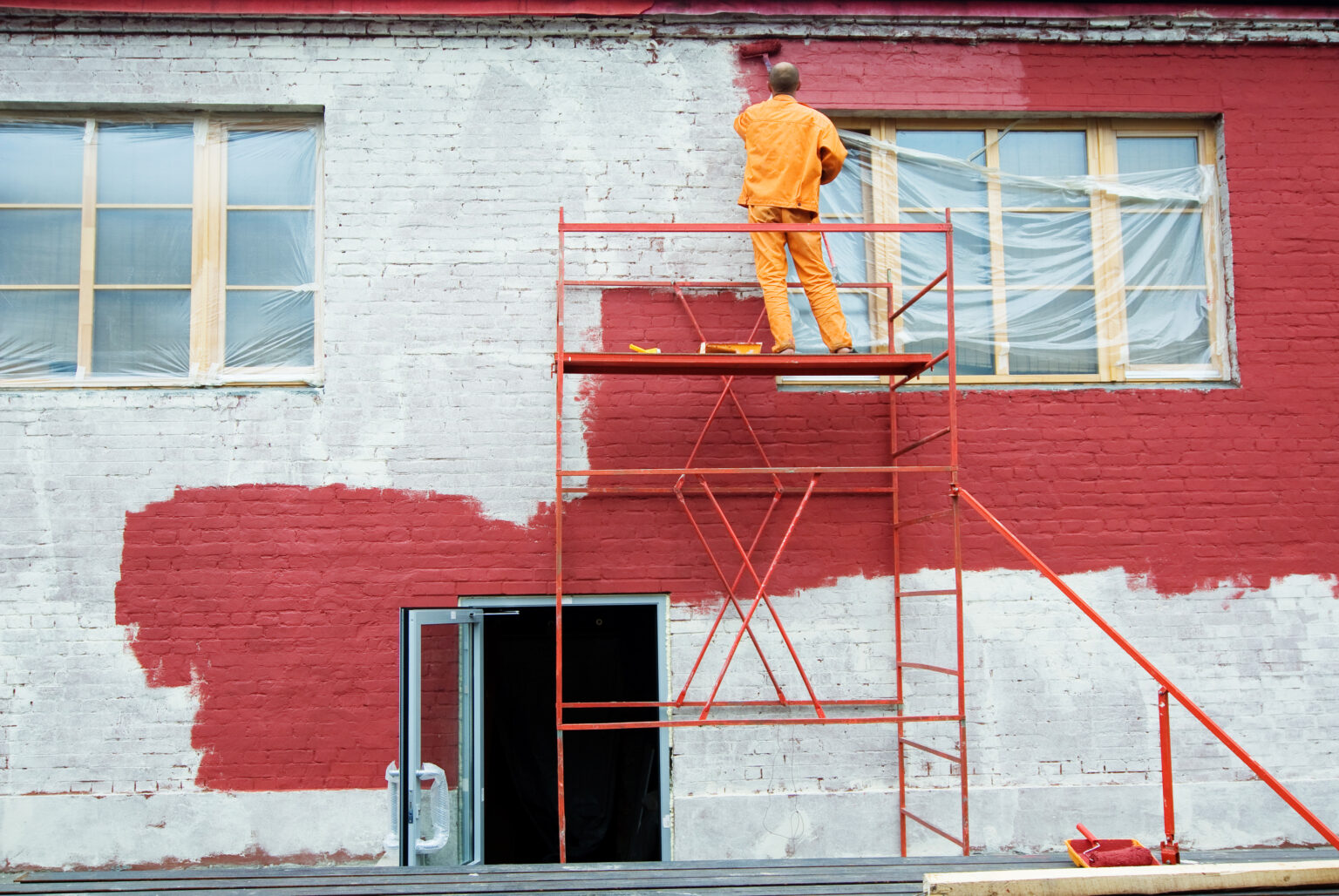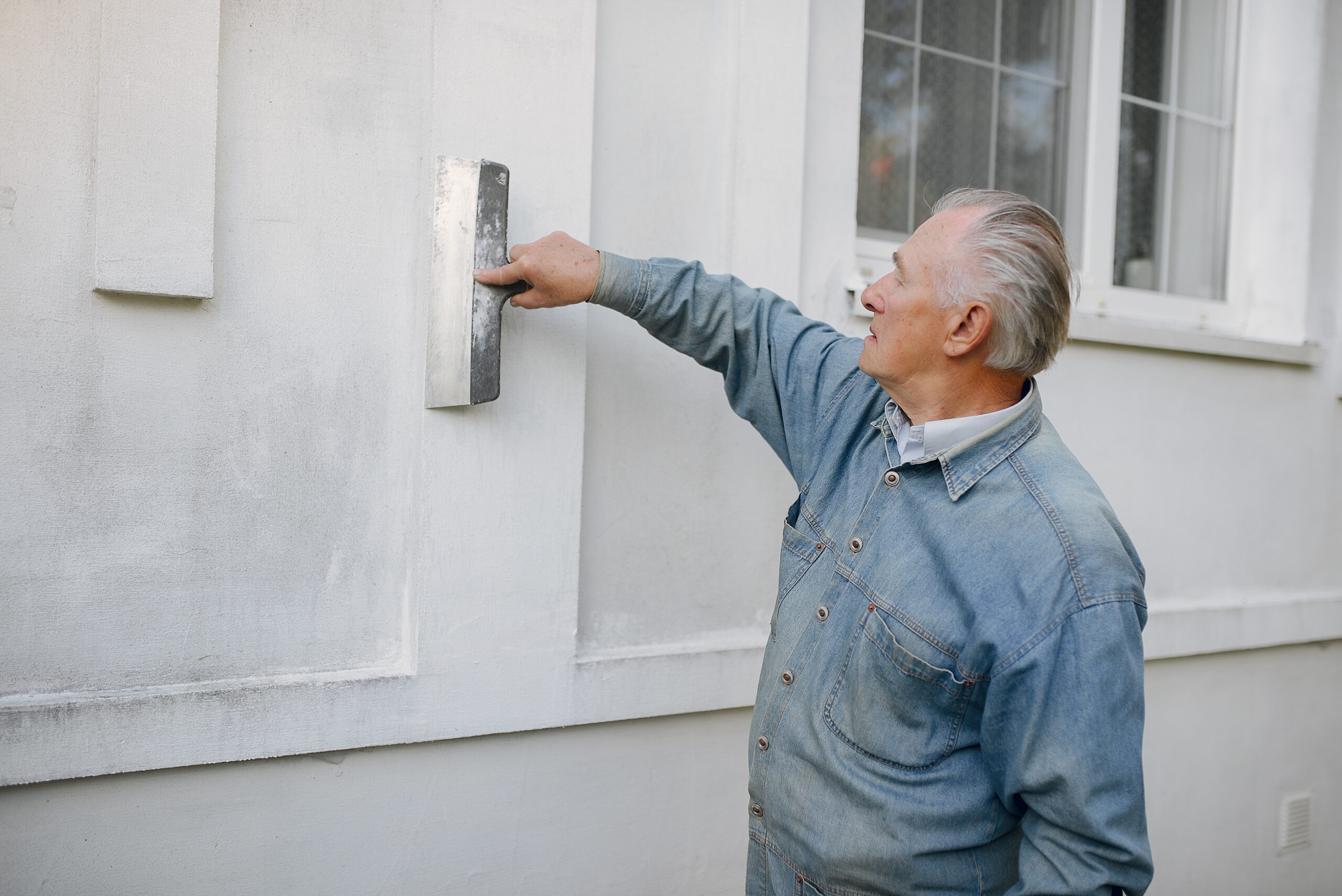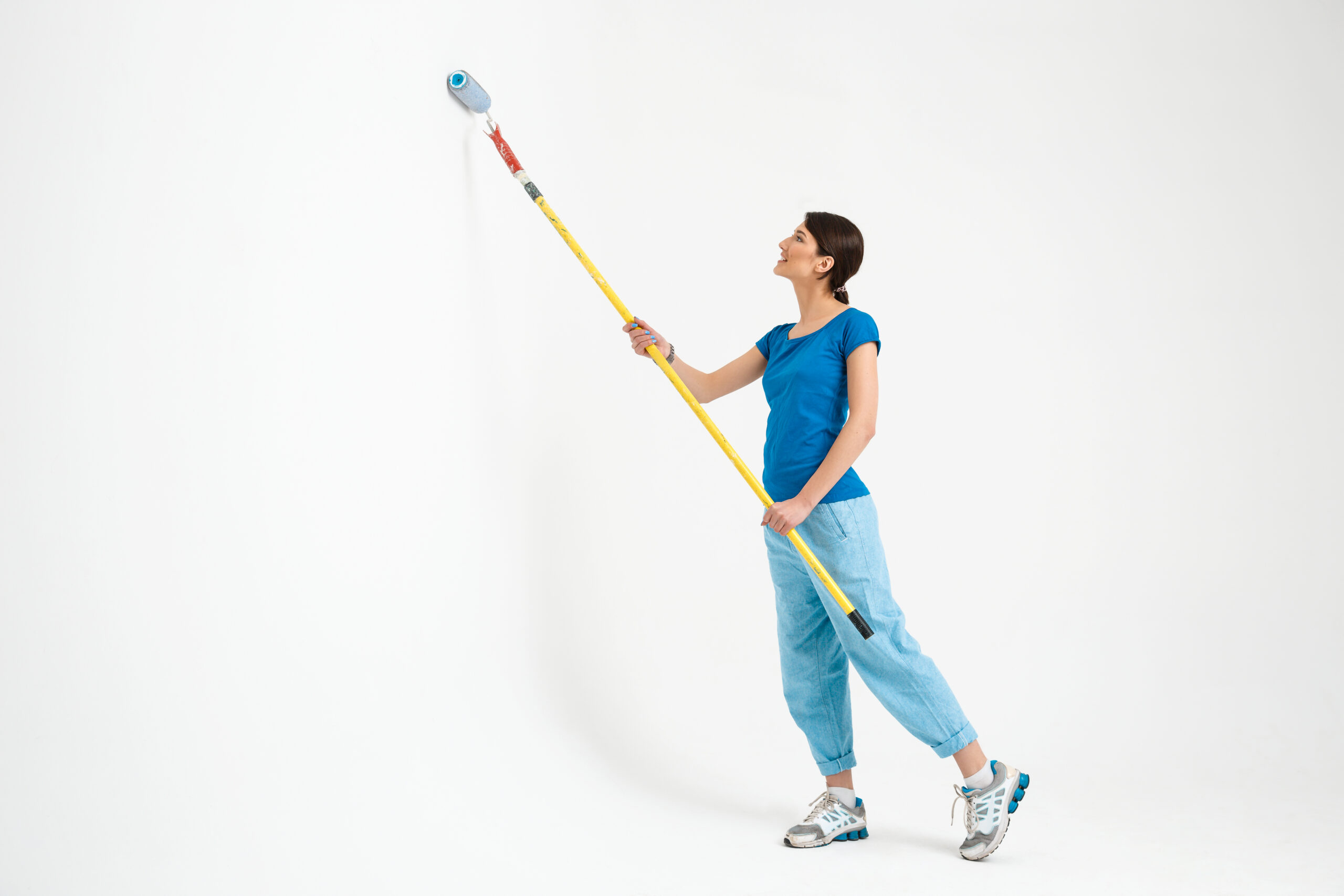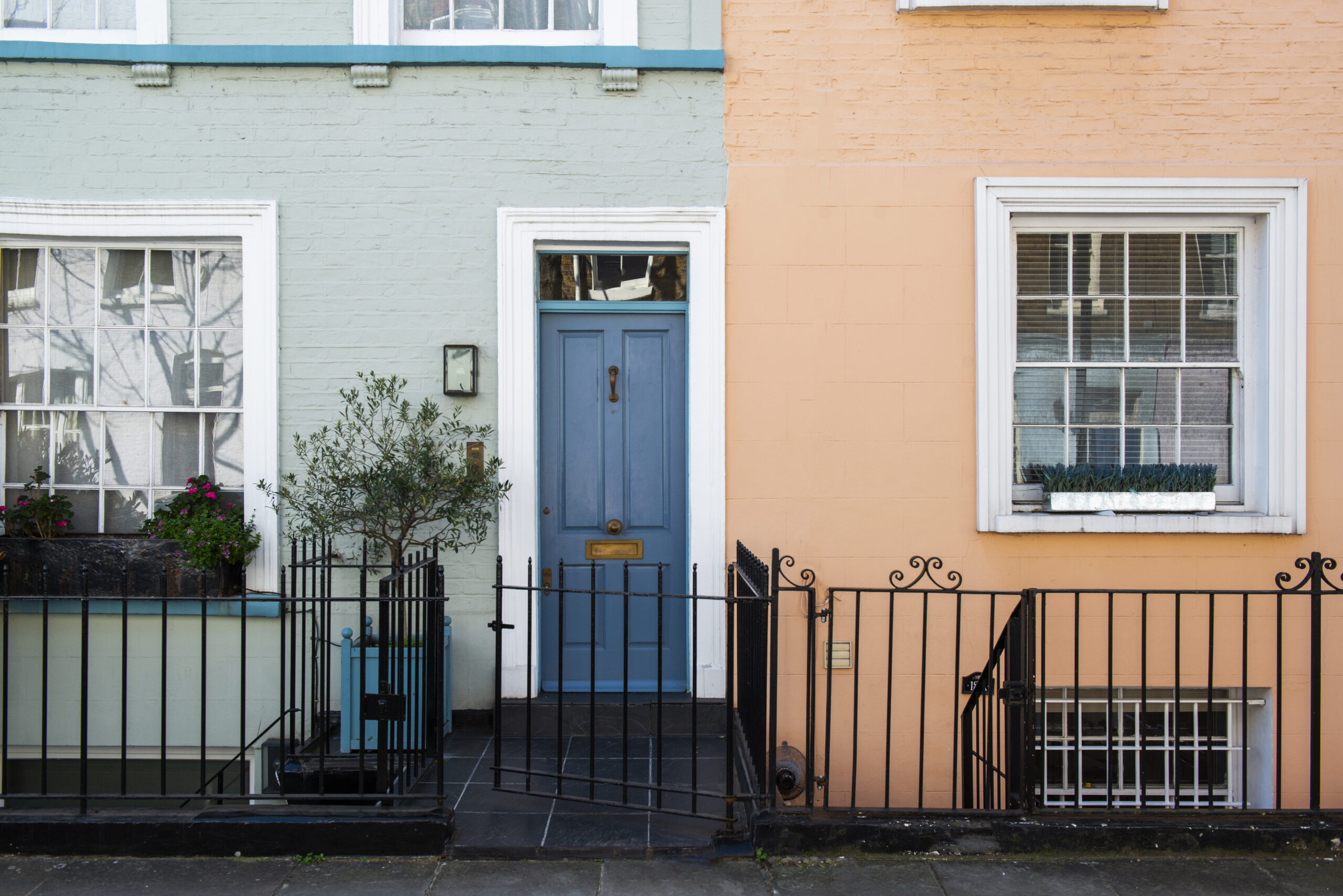- Free Estimates

Connecticut’s beautiful but unpredictable climate plays a major role in how long exterior house paint holds up. From icy winters and wet springs to humid summers and crisp, windy falls, every season brings conditions that can test even the toughest paint jobs. These weather shifts not only impact how paint looks over time but also how well it protects the home’s exterior materials from moisture, sun damage, and peeling.
Here are five key ways Connecticut weather affects the lifespan of exterior paint.
✔ Connecticut’s four-season climate significantly impacts how long exterior paint lasts.
✔ Temperature swings can cause paint to crack, peel, and lose adhesion over time.
✔ High humidity and trapped moisture reduce paint longevity on exterior surfaces.
✔ UV rays from summer sun accelerate fading, chalking, and paint breakdown.
✔ Wind and storm debris wear down the durability of outdoor paint, especially on exposed sides.
✔ Regular maintenance like washing and sealing extends how long exterior paint lasts.
✔ Using climate-appropriate paint and proper prep work boosts long-term performance.
✔ Knowing when to repaint house exterior helps prevent deeper damage and higher costs.

How long exterior paint lasts depends on several factors, including surface material, paint quality, climate, and maintenance. In Connecticut, most exterior paint jobs last between 5 to 10 years, with wood siding typically needing repainting sooner than brick or fiber cement.
Homes that experience frequent exposure to sunlight, moisture, or wind may see faster wear, especially if the original prep work was rushed or low-quality products were used. Choosing the right paint and maintaining the surface regularly can significantly improve paint longevity on exterior surfaces. This helps homeowners avoid frequent full repainting—especially with exterior house painting typically costing between $1 to $4 per square foot
Connecticut sees dramatic changes in temperature from season to season, and those fluctuations take a toll on exterior paint. Paint expands and contracts with temperature shifts, and over time, this movement weakens the paint’s structure. Understanding how these temperature changes work helps explain how long exterior paint lasts under real-world conditions.
Moisture is one of the most damaging elements for painted exteriors in Connecticut. Frequent rainfall, snowmelt, fog, and seasonal humidity all contribute to trapped water in siding, trim, and beneath paint layers. These moisture cycles slowly degrade painted surfaces and reduce paint longevity on exterior surfaces over time.
Sunlight in the warmer months brings more than just warmth—it brings intense UV rays that slowly break down paint pigments and binders. Over time, this exposure causes fading, chalking, and a dull appearance, especially on south- and west-facing walls. UV damage is one of the leading causes of reduced durability of outdoor paint.
Wind and storm activity in Connecticut—especially during late fall and hurricane season—create additional threats to painted exteriors. Flying debris, heavy rainfall, and pressure changes can accelerate paint deterioration and directly impact how long does exterior paint last. These factors often force earlier repainting, even on surfaces that appear structurally sound.
Even the highest-quality exterior paint won’t last without regular upkeep. In Connecticut, the combination of leaf debris, pollen, salt spray from winter treatments, and organic growth calls for annual attention. Homes that skip this routine maintenance often see reduced paint longevity on exterior surfaces.

Choosing the right type of paint is one of the most important steps in protecting a home—a decision that professional house painters handle with precision and efficiency in a growing industry valued at $22.6 billion in 2024
Connecticut’s freeze-thaw cycles, summer humidity, and UV exposure all require more than just a generic exterior product. When deciding how long does exterior paint last in such conditions, it’s essential to look beyond the label. Below are six factors to consider when selecting paint that will support paint longevity:
Paint that can expand and contract with temperature changes will last longer on homes in regions like Connecticut. Products labeled for cold climates are designed to resist cracking and peeling during harsh winter months. This flexibility is key to extending how long exterior paint lasts on siding and trim.
Acrylic latex paints are breathable, dry faster, and handle moisture better than oil-based options. This makes them ideal for Connecticut’s high-humidity summers and frequent rain. They also resist mildew and maintain the durability of outdoor paint longer under seasonal stress.
South- and west-facing walls take the brunt of summer sun, causing fading and chalking over time. UV-resistant paint formulas help preserve color and sheen, protecting surfaces from breaking down too soon. These coatings make a significant difference in how long exterior paint lasts in sunny areas.
These finishes repel moisture better than flat paints and are easier to clean, making them a smart choice for trim, doors, and window casings. In Connecticut, where salt spray and grime build up quickly in winter, this added protection matters. Using the right sheen helps maintain the durability of outdoor paint where wear is most frequent.
Exterior paints with built-in fungicides are helpful in Connecticut’s damp spring and early summer months. These additives prevent mildew stains from forming under the paint film, especially on shaded or poorly ventilated surfaces. They also contribute to longer paint longevity on exterior surfaces by reducing biological degradation.
Different surfaces—like wood, fiber cement, stucco, or vinyl—require different formulations to ensure adhesion and coverage. A paint meant for masonry won’t perform well on wood siding, and vice versa. Choosing the correct product ensures better bonding, which directly affects when to repaint house exterior and how often repainting is needed.
Knowing how long does exterior paint last involves understanding more on surface preparation than the product alone. A poorly prepared surface will lead to bubbling, peeling, and fading—regardless of how high-quality the paint is. The steps below are essential for making sure paint sticks well and cures properly:
Mildew, pollen, and dirt must be removed with a power washer or scrub brush and cleaning solution before paint is applied. In humid climates, organic buildup on siding can trap moisture and lead to premature failure. Clean surfaces are the foundation of strong adhesion and help improve paint longevity on exterior surfaces.
In humid or damp conditions, surfaces can feel dry to the touch while still holding moisture inside. Waiting at least 48 hours after rain—or longer for wood siding—prevents blistering and peeling once paint is applied. Skipping this step often shortens how long exterior paint lasts, especially in moisture-prone areas.
Loose paint must be fully removed, especially in regions with freeze-thaw cycles that can push air behind the surface. Sanding smooths rough edges and allows the new paint to bond evenly. Thorough prep is a key contributor to the long-term durability of outdoor paint.
Cracks in trim, window frames, and between boards let water sneak behind the paint. Sealing these gaps with weather-resistant caulk prevents moisture infiltration that can damage both the paint and the structure underneath. This step directly supports paint longevity on exterior surfaces, especially in cold, wet seasons.
Primer helps paint adhere to porous materials and covers stains from rust, mildew, or previous water damage. In cold or humid climates, using a high-quality bonding primer improves performance and ensures better color retention. It also extends how long exterior paint lasts by creating a stable base.
Painting should never be done when temperatures are below 50°F or when rain is expected within 24 hours. Connecticut’s unpredictable weather means checking extended forecasts and avoiding humid mornings or sudden cold snaps. Timing the project right ensures proper curing and helps determine when to repaint house exterior in the future.
Yes, color plays a subtle but important role in how long exterior paint lasts. Darker colors tend to absorb more heat, which causes expansion and contraction that leads to faster fading and cracking. Lighter colors reflect sunlight better, reducing surface temperature and stress on the paint film. Choosing the right shade can help extend paint longevity on exterior surfaces, especially on sun-exposed areas.
Overgrown shrubs, trees, and vines that touch the house can trap moisture and rub against painted surfaces. This constant contact creates abrasion and promotes mold or mildew, which shortens the durability of outdoor paint. Keeping vegetation trimmed at least 6 to 12 inches away from siding allows for better airflow and drying. Well-maintained landscaping indirectly improves how long exterior paint lasts by reducing moisture-related damage.
Painting over old paint can work if the surface is clean, intact, and properly sanded. However, if the old layer is flaking, chalking, or bubbling, it must be removed to ensure proper adhesion. Skipping this step could cause the new paint to peel prematurely, reducing paint longevity on exterior surfaces. Always inspect and prep thoroughly to avoid unnecessary repainting and to extend how long exterior paint lasts.
Yes, environmental contaminants like vehicle exhaust, industrial pollution, and road salt can deteriorate exterior paint. In regions like Connecticut where road salt is common in winter, residue can settle on lower siding and eat away at paint coatings. Regular washing in spring can prevent buildup and protect the durability of outdoor paint. These pollutants often go unnoticed but directly affect how long exterior paint lasts in urban or high-traffic areas.
Termites, carpenter bees, and ants can damage wood beneath painted surfaces, causing the paint to crack or bubble from behind. Once insects create entry points, moisture gets trapped, reducing paint longevity on exterior surfaces. Even small holes or tunnels can compromise a large section of painted siding over time. Monitoring and treating infestations early plays a role in how long exterior paint lasts and protects both the structure and finish.

At Avon Professional House Painter, we know what Connecticut weather can do to a home’s exterior—and we’re here to help protect and restore it with expert precision. Our team uses high-quality, weather-resistant paints and proven prep methods to ensure every job lasts through Avon’s changing seasons. Whether it’s time for a full repaint or just a touch-up to extend the durability of outdoor paint, we deliver detail-driven results that stand up to time and climate.
Trust a local Avon, CT, crew that treats every home like their own—call today for a free, no-pressure quote.